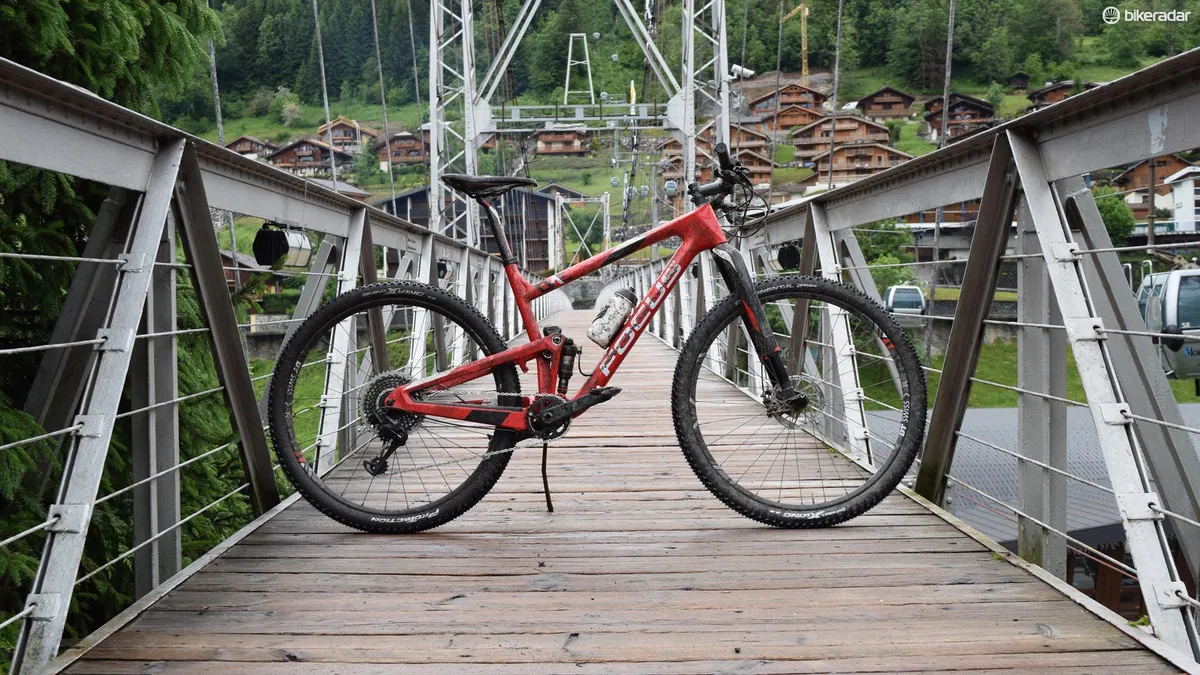If you've been keeping a keen eye on the cross-country World Cup, you might have spotted Florian Vogel riding a Focus bike with a mysterious shroud around the frame’s suspension linkage. Last week, in a very rainy French Alpine town, Focus revealed all – its brand spanking new FOLD suspension design, which has been built into two new models.
- Focus reshapes three mountain bike platforms
- Focus Bikes reviews and buying advice
- Focus Raven Max Factory 29 review
FOLD, in case you’re wondering, stands for Focus Optimised Linkage Design, and is a multi-linkage suspension design that incorporates a degressive, then progressive suspension kinematic.
With Florian riding in the XC WC it’s no surprise that one model, the O1E, is a flat-out XC race bike, designed to tackle the ever=increasing technical nature of cross country courses. It’s a 100mm travel 29er, with full carbon frame and linkages, and a claimed 1830g (med) frame, with all hardware, but no shock.
The other is the JAM, a 140mm 650b trail bike that sits just below the 160mm SAM in terms of travel. The top-line JAM is fully carbon, while there are two with a carbon front end and alloy rear, and three full alloy versions.
The FOLD design: we degress
The FOLD suspension design is where the magic happens. The entire rear triangle is one piece, and rigid, with no suspension affecting flex or pivots to add weight. This, so Focus say, reduces weight, meaning the unsprung weight of the bike is reduced.
This reduces the mass that has to move when an obstacle is hit, meaning in a roundabout way, your suspension works better.
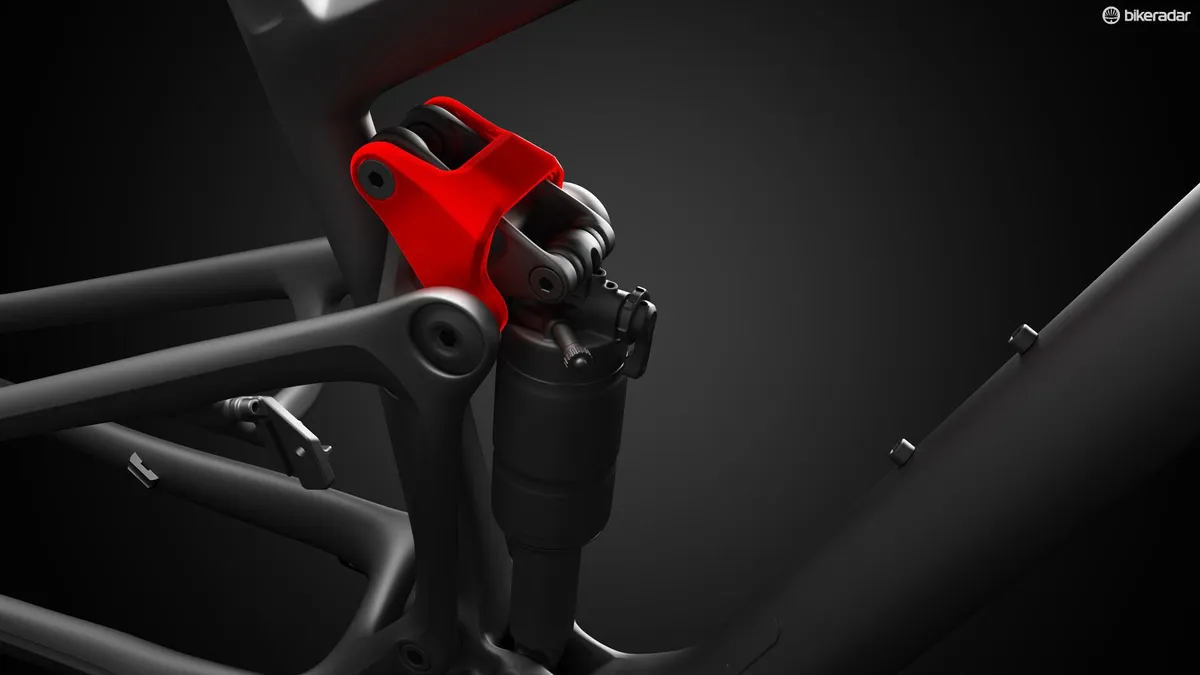
A diagram showing the 'Guidelink' in the FOLD system
The system works around two linkages at the top of the shock, the ‘Guidelink, whose material and size impacts on the stiffness or forgiveness of the frame, and the main link, which decouples the shock from side loading, thus improving shock durability.
Where FOLD differs from most suspension designs is that the initial portion of the stroke is degressive – in other words it takes less force to compress the shock a by millimetre, than the previous millimeter – which is the opposite of the more normal progressive stroke. This degressive part of the stroke extends to the recommended sag point, from which it becomes a progressive stroke. The sag point, and thus switch from degressive to progressive is at 25% travel for the O1E and 30% for the JAM.
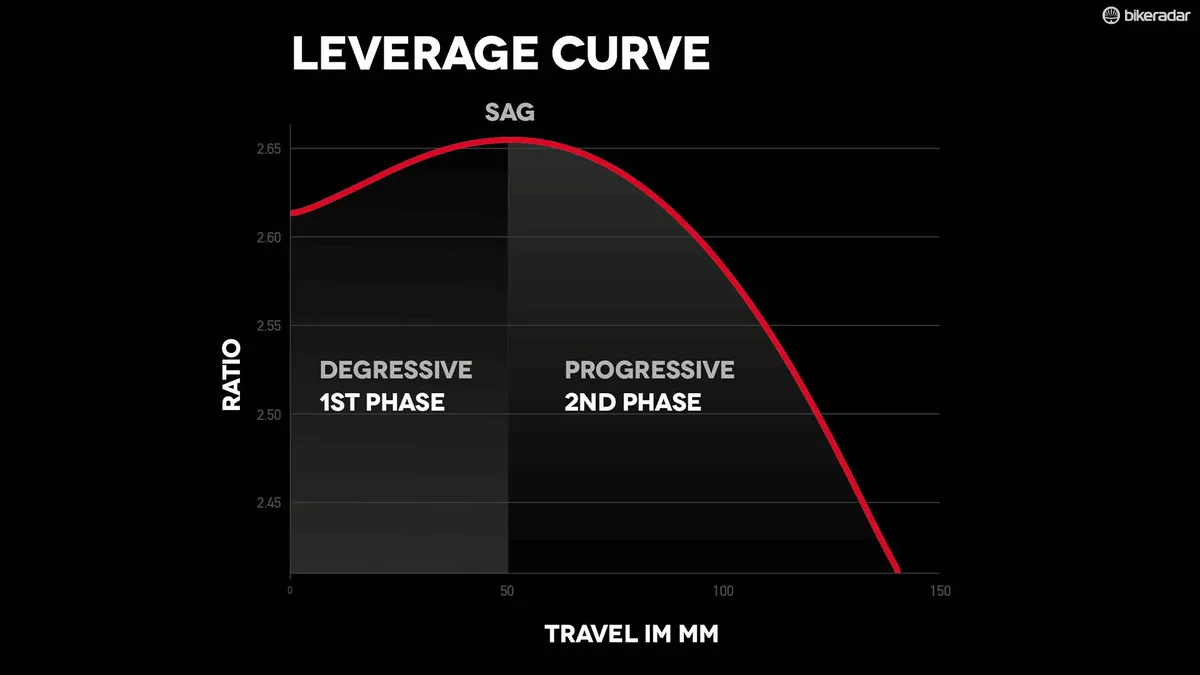
The unusual degressive/progressive suspension stroke
Focus says that this first degressive phase gives a sensitive, traction-giving feel, with better small bump sensitivity, as the shock is quick to return to it’s sagged position after the shock extends having gone through ruts and braking bumps. The second phase gives the usual performance that you’d expect – plush travel and bottom-out protection. With all the moving parts located in the center of the frame, Focus say they’ve centralized and lowered the center of mass of the frame.
O1E cross-country bike
The O1E has 100mm of suspension front and rear, courtesy of a XC optimized FOLD system. Focus has used carbon wherever possible, to keep weight low, including in the Guidelink and main link. The O1E is designed to run 25% sag, and this is where the suspension curve shifts from degressive to progressive.
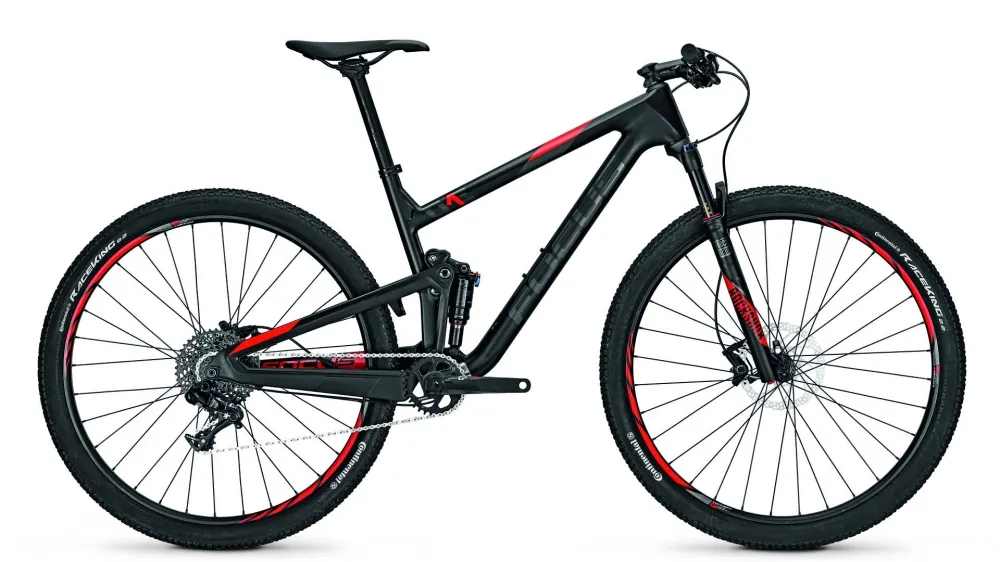
The new O1E Evo model
Geometry is pretty standard XC fare, with a 69.2-degree head angle, steepish 74.5-degree seat angle, 450mm reach and 480mm seat tube in size large (small and medium also available).
There are three models in the O1E range with the RockShox RS1, SRAM XX1 Eagle and DT Swiss XR 1501 equipped Team model at the top of the tree. There’s also a RS SID XX and Shimano XT ‘Pro’ model, and RS SID and SRAM GX ‘Evo’ edition. They come in at 7,999 Euro, 4,699 Euro and 3,999 Euro respectively, GBP / USD pricing TBC.
JAM trail bike
The JAM is a 140mm travel trail bike, designed to sit between the Spine and SAM models. In this iteration of the FOLD system, 30% sag is suggested, allowing the bike to sit a touch further into its travel. The JAM is designed to have a touch more flex than the O1E, which improves grip in off-camber sections, or while going across ruts.
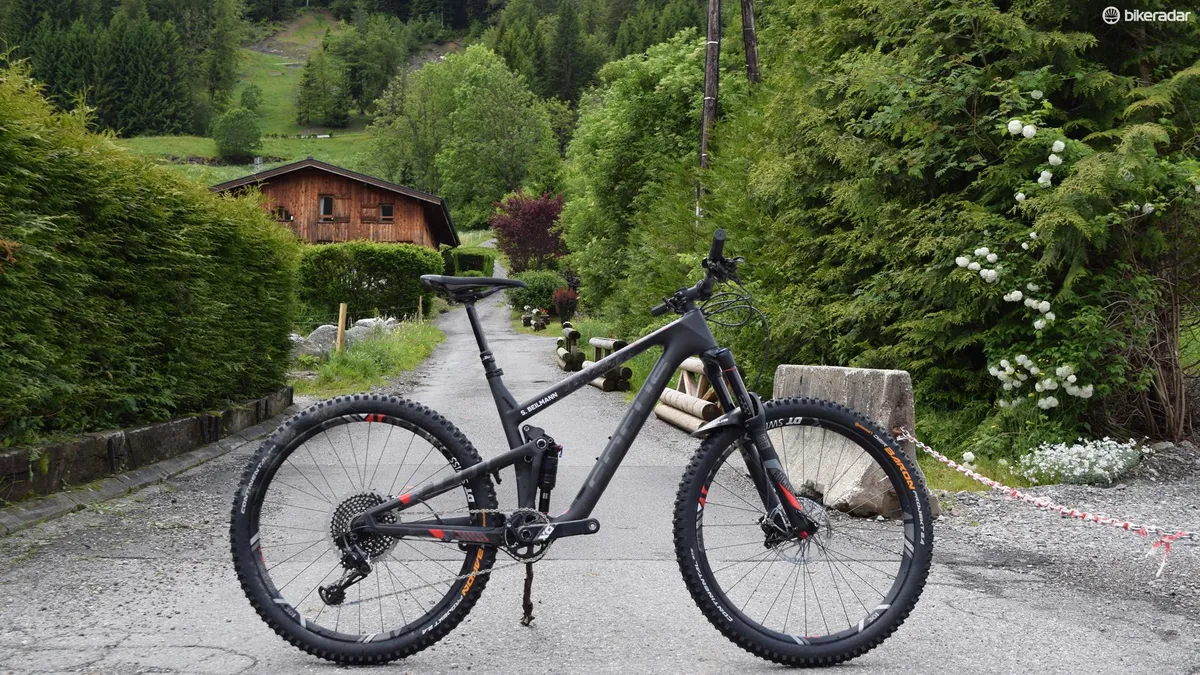
The JAM is a 140mm trail bike
Four sizes (S, M, L, XL) are available, with the Large having a 66.8-degree head angle, 74.5-degree seat angle, 455mm reach, 425mm chainstays and 470mm seat tube – nothing out of the ordinary.
Six models are available – the top level JAM C SL being the only one to have a full carbon frame. It comes with a Pike RCT3 fork, SRAM XO1 Eagle 12 speed drivetrain and DT Swiss XM 1501 carbon wheels. This model comes in at 6,999 Euros.
Below that is the Factory model, with a carbon front, alloy rear frameset. The Factory model is built with a 150mm Yari fork (as opposed to the regular 140mm), GX drivetrain and SRAM Guide R brakes, at a price of 4999 Euros.
From there there’s another carbon/alloy model (the JAM C PRO), and then three fully alloy models, stopping at the JAM Elite, priced at 2599 Euros and equipped with a Sektor Silver RL fork and 2x11 SLX drivetrain.
Availability for the bikes will be later this summer.
